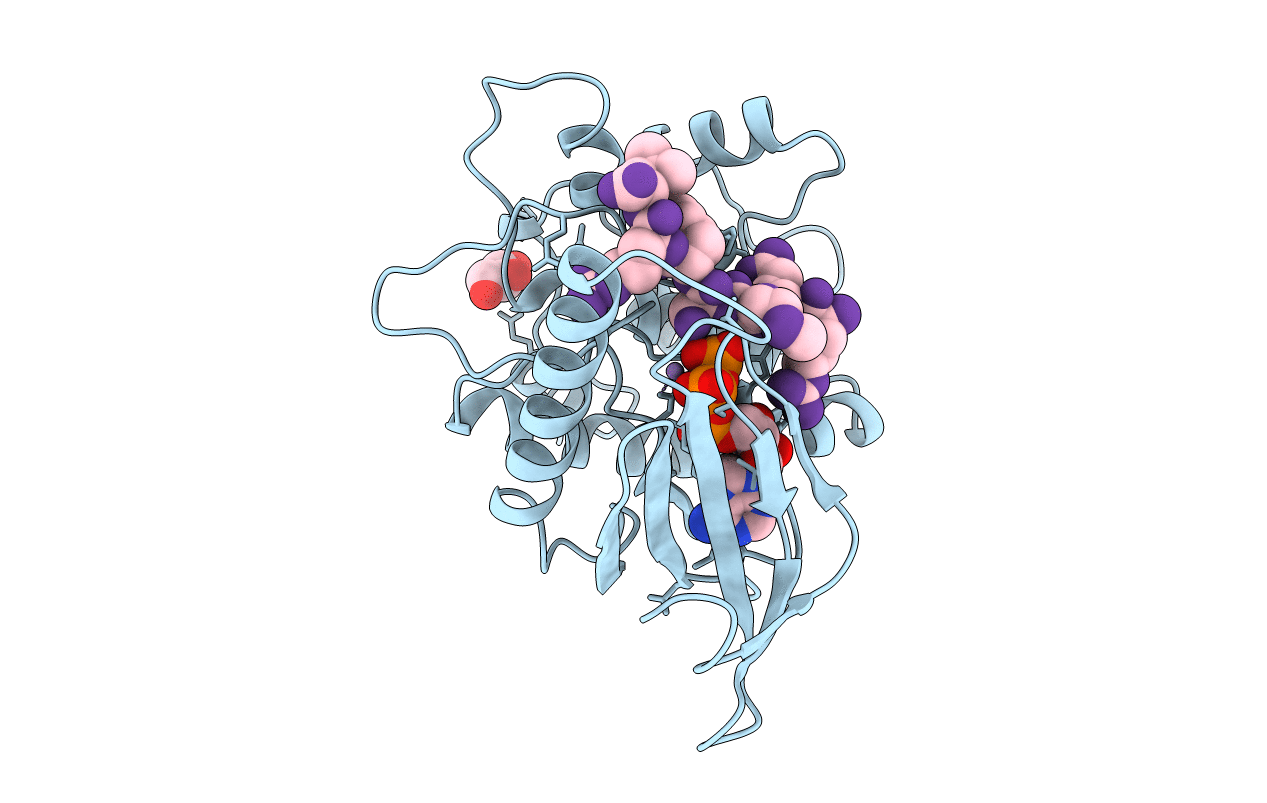
Deposition Date
1998-06-18
Release Date
1999-01-13
Last Version Date
2024-05-22
Entry Detail
PDB ID:
2PHK
Keywords:
Title:
THE CRYSTAL STRUCTURE OF A PHOSPHORYLASE KINASE PEPTIDE SUBSTRATE COMPLEX: KINASE SUBSTRATE RECOGNITION
Biological Source:
Source Organism:
Oryctolagus cuniculus (Taxon ID: 9986)
Host Organism:
Method Details:
Experimental Method:
Resolution:
2.60 Å
R-Value Free:
0.30
R-Value Work:
0.23
R-Value Observed:
0.25
Space Group:
P 32 2 1


